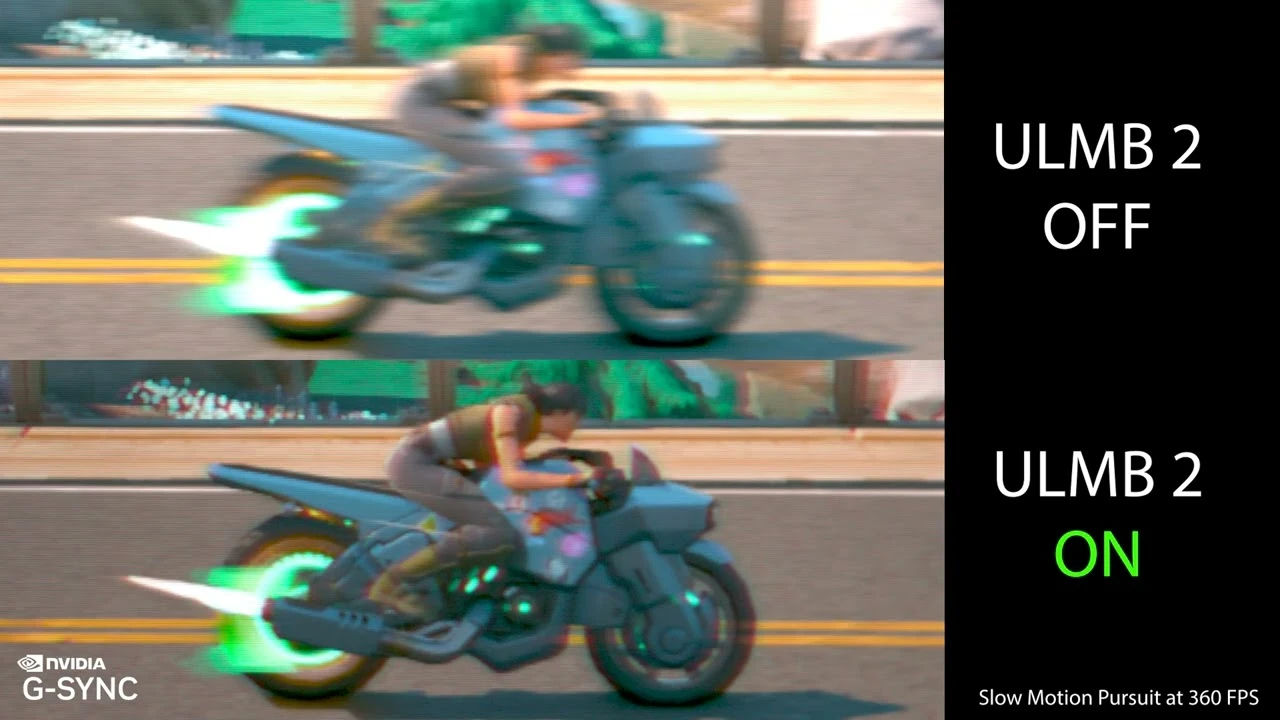Even if you have the biggest, baddest graphics card on the planet, your games may still not look as crisp as you'd expect. But before you blame your GPU, it's important to consider your monitor. We're talking about motion blur, the effect you see when the visuals on your screen get smeared, making things look blurry or ghosted. However, it's essential to note that this is different from the motion blur setting you might find in some of your favorite games, which adds an artificial cinematic blurring effect when you quickly change the camera angle. Real motion blur has been a long-standing issue for gamers, affecting both visual appeal and competitive gaming performance.
The Problem with Motion Blur
Why is motion blur still a problem, and how is Nvidia's new ULMB2 trying to fix it? The main issue lies in how most computer monitors are designed. When shopping for a monitor, you often come across a specification called "response time." This metric signifies how long it takes for pixels to change colors, typically measured as the time it takes to go from one shade of gray to another. On displays with a backlight, which includes almost all monitors except OLEDs, response times are not instantaneous. It takes a few milliseconds for a monitor's pixels to change, and this delay is enough for gamers to perceive motion blur.
Backlight Strobing: A Solution to Motion Blur
To combat motion blur, the primary approach is to enable backlight strobing. This feature turns off the backlight for short periods while the pixels transition, reducing the perceived blur. In 2015, Nvidia introduced their version of backlight strobing, called ULMB (Ultra Low Motion Blur). However, due to the relatively long pixel response times back then, ULMB had to keep the backlight off for 75% of the time. This often resulted in a noticeably dim picture, diminishing its appeal, especially for competitive gamers. Additionally, ULMB had to slow down the screen's refresh rate to give the pixels enough time to transition.
ULMB2: An Improved Solution
Nvidia recently rolled out an improved version called ULMB2, which addresses the issues that plagued the original ULMB. One of the significant advantages of ULMB2 is that it doesn't lower a panel's refresh rate like its predecessor did. This improvement is mainly due to the fact that pixel response times are significantly shorter today than they were in 2015.
ULMB2 also enhances basic backlight strobing by controlling pixels on a more granular level. Pixels refresh from top to bottom, and when the backlight flashes, some pixels will be in a state of transition, causing crosstalk, which results in blurring or ghosting. ULMB2 minimizes crosstalk by overdriving certain pixels with higher voltage, causing them to change state more quickly than others. This controlled overdrive creates a sweet spot where the number of pixels mid-transition is minimal when the backlight turns on. The result is not only less motion blur but also a brighter image compared to the original ULMB.
Monitor Compatibility and Conclusion
However, there's a catch: you'll need a monitor that specifically supports ULMB2. At the time of writing, there are only two monitors on the market that do, and they are aimed at the competitive and enthusiast crowd. These high-refresh-rate G-Sync displays don't come cheap, but they offer an exceptional gaming experience with reduced motion blur.
In conclusion, motion blur remains a challenge for gamers, but Nvidia's ULMB2 is a promising solution that enhances the gaming experience by reducing blur and maintaining image brightness. While monitor compatibility is limited at the moment, it's a step in the right direction for gamers looking for the crispest visuals and improved competitive performance in their gaming experience.


No comments yet